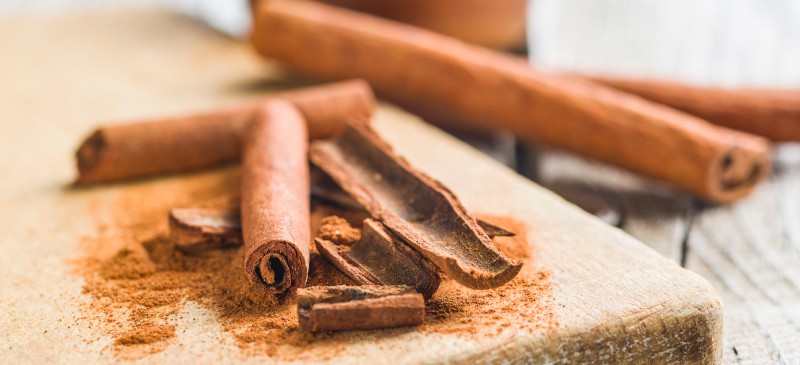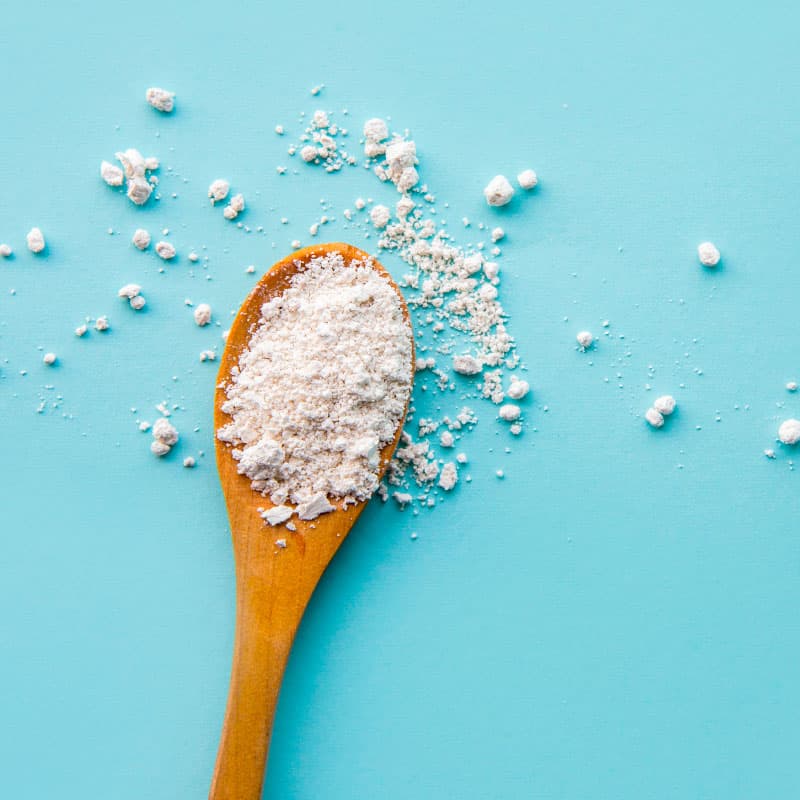This Dr. Axe content is medically reviewed or fact checked to ensure factually accurate information.
With strict editorial sourcing guidelines, we only link to academic research institutions, reputable media sites and, when research is available, medically peer-reviewed studies. Note that the numbers in parentheses (1, 2, etc.) are clickable links to these studies.
The information in our articles is NOT intended to replace a one-on-one relationship with a qualified health care professional and is not intended as medical advice.
This article is based on scientific evidence, written by experts and fact checked by our trained editorial staff. Note that the numbers in parentheses (1, 2, etc.) are clickable links to medically peer-reviewed studies.
Our team includes licensed nutritionists and dietitians, certified health education specialists, as well as certified strength and conditioning specialists, personal trainers and corrective exercise specialists. Our team aims to be not only thorough with its research, but also objective and unbiased.
The information in our articles is NOT intended to replace a one-on-one relationship with a qualified health care professional and is not intended as medical advice.
Coumarin: Inflammation Fighter or Toxic Danger?
November 15, 2018

Despite its sweet flavor and pleasant aroma, coumarin is a chemical that can have serious effects on health when consumed in high amounts. In fact, high doses have been linked to liver damage, impaired cognitive development and even cancer formation in both animal and human studies.
However, coumarin is found distributed throughout the food supply and is naturally present in many otherwise nutrient-dense foods like cinnamon, celery, strawberries and apricots. Plus, it’s commonly used in the production of blood-thinning medications and is often added to fragrances and cosmetics alike.
So is coumarin safe, and how can you be sure you’re not going over the recommended daily limit? Here’s what you need to know about this controversial chemical.
What Is Coumarin?
Coumarin is a chemical compound found in a variety of different plants. It has a fragrant, sweet odor and flavor and is often added to fragrances and cosmetics. It’s also used as a precursor to anticoagulant medications, such as warfarin and Coumadin, which help promote blood circulation and prevent the formation of blood clots.
Many different foods contain coumarin, but it’s typically found in very small amounts well under the daily limit of 0.05 milligrams/pound of body weight. The exception is cassia cinnamon, which is one of the most concentrated sources of coumarin in the diet. In fact, even a few teaspoons of cassia cinnamon can put you over the recommended daily limit.
In the past, synthetic coumarin was also used as a food additive to enhance the flavor of foods. However, in 1954, the U.S. Food and Drug Agency banned the use of coumarin as a food additive due to reports of its potentially harmful effects on health in animal studies. (1)
High doses of coumarin consumption have been associated with a range of adverse side effects, including liver damage and impaired cognitive development. Plus, it may also promote tumor formation and could cause short-term side effects like nausea, diarrhea and headaches, according to animal models, case reports and human studies.
Side Effects and Dangers
- Can Damage Liver Health
- May Promote Cancer Development
- Could Impair Cognitive Development
- Causes Short-Term Negative Side Effects
1. Can Damage Liver Health
One of the primary concerns associated with coumarin consumption is its potential to cause liver disease. Its use as a food additive was even banned in the United States following an animal study that evaluated the effects of coumarin toxicity and showed that it could have liver-damaging effects when administered to rats. (2)
While research is still mostly restricted to animal models, some studies have even found that it could have similar effects on liver function in humans as well. In fact, one report published by the Department of Internal Medicine at University Hospital in Frankfurt, Germany described a case of severe hepatitis and liver damage in a 56-year-old woman that was caused by the use of an anticoagulant drug derived from coumarin. (3)
2. May Promote Cancer Development
Some research suggests that coumarin may be carcinogenic and could promote the formation of tumor cells when consumed in very high doses. In particular, animal models have found that it may be especially harmful for the liver and lungs and could potentially lead to cancer development.
Unfortunately, though, evidence on the carcinogenic effects of coumarin in humans is very limited, so it’s unclear whether it may have the same cancer-causing effects in people taking high doses. According to a review published in Food and Chemical Toxicology, exposure to coumarin from food or cosmetic products poses no health risk to humans. (4) However, more research is still needed to understand how it may affect the general population.
3. Could Impair Cognitive Development
Findings from several studies show that coumarin and certain medications derived from it may play a role in cognitive development. Some research reports that fetal exposure to it may be linked to an increased risk of neurological problems and cognitive deficits later in life.
One study published in the journal Early Human Development, for example, showed that exposure to coumarin derivatives while in utero was tied to a 90 percent increased risk of mild neurological dysfunction, especially when exposure occurred during the second or third trimester. (5) Similarly, another study published in Early Human Development compared a group of children who had been exposed to coumarins during pregnancy with a control group and found that those who scored the lowest in terms of IQ and neurological development had been exposed to coumarin-derived medications.
Keep in mind, however, that these studies looked at the effects of blood-thinning medications derived from coumarin rather than from food sources alone. Additional studies are needed to examine how exposure to high doses from food may affect cognitive development.
4. Causes Short-Term Negative Side Effects
When consumed in high doses, coumarin can cause several short-term negative side effects, most of which will usually resolve on their own with time. Some of the most commonly reported adverse symptoms of coumarin include blurred vision, nausea, diarrhea, headaches and loss of appetite. Talk to your doctor immediately if you experience these or other side effects like unusual bleeding, bruising or blood in the urine or stools, all of which could indicate a more serious problem.

Any Potential Benefits?
It’s generally recommended to limit coumarin consumption due to the long list of potential side effects and dangers that it is commonly associated with. However, some studies have found that it may have some benefits as well and could even be useful in the treatment of certain medical conditions. In fact, studies have also found that it may possess powerful antifungal, antiviral, anti-hypertensive, neuro-protective and anti-hyperglycemic properties. (6)
So what is coumarin used for? Studies show that it may be especially beneficial in the treatment of lymphedema. Lymphedema is a condition characterized by the swelling of your arms or legs due to the buildup of lymph fluid under the skin. (7)
Coumarin may also increase levels of antithrombin, an important protein that helps regulate blood clotting. (8) For this reason, it is used as a precursor to Coumadin/warfarin, a medication that acts as an anticoagulant and blood thinner.
Research shows that it may also help relieve inflammation to reduce the risk of chronic disease. For instance, one animal study published in the journal Phytomedicine showed that coumarin derivatives had antioxidant and anti-inflammatory properties and were able to protect cells against damage to aid in the prevention of inflammatory intestinal conditions. (9)
Top 14 Coumarin Foods
Coumarin is found naturally in many plant foods and may also be added to certain food additives and flavorings, like vanilla extract. Keep in mind that many healthy foods may contain small amounts of this compound but can still be included as part of a balanced diet when consumed in moderation.
Here are some of the most common sources of coumarin in the diet (10, 11):
- Cassia Cinnamon
- Mexican Vanilla
- Tonka Beans
- Strawberries
- Cherries
- Apricots
- Green Tea
- Celery
- Bilberry
- Honey
- Carrots
- Sweet Clover
- Peppermint
- Licorice Root
Uses in Ayurveda and TCM
Although coumarin is not typically used in holistic forms of medicine, many of the foods that it’s found in are. Cassia cinnamon, in particular, contains a highly concentrated dose in each serving. It is often considered a staple ingredient in both Ayurveda and Traditional Chinese Medicine.
Cassia cinnamon has been used in Traditional Chinese Medicine for thousands of years. It is revered for its potent healing properties. It’s most often used to boost energy levels and circulation. Plus, cassia cinnamon is used to treat issues like gas, colds, nausea, diarrhea and painful menstruation.
Meanwhile, it is frequently used on the Ayurvedic diet to enhance libido, prevent gastrointestinal problems, increase circulation and relieve indigestion. It’s typically recommended for people with the kapha dosha. Cassia cinnamon is considered a natural treatment for diabetes and high blood sugar as well.
Coumarin vs. Coumadin vs. Curcumin
Coumarin is a naturally occurring compound found in many plants. It is responsible for the sweet smell of ingredients like sweet woodruff and sweet clover. The coumarin in cinnamon is the most concentrated dietary source, with some reports showing that cassia cinnamon contains up to 63 times more coumarin than Ceylon. (12) It is also synthesized and used as a precursor to coumarin drugs like warfarin, also known as Coumadin.
Coumadin is a type of prescription blood-thinning medication that is used to help treat and prevent the formation of blood clots in the body. This ensures proper blood flow. It can reduce the risk of serious problems like heart attack, pulmonary embolism and stroke to keep you healthy. Coumadin is not found in nature and should be taken under medical supervision due to the high risk of adverse side effects.
Curcumin, on the other hand, is the active ingredient found in turmeric that is responsible for supplying it with its vibrant yellow hue and powerful health-promoting properties. The benefits of curcumin have been well-documented. Studies show that it can do everything from relieve pain to balance cholesterol levels and beyond. (13, 14) Like Coumadin, it may also help inhibit platelet aggregation to block blood clot formation. This could potentially reduce the risk of heart attacks and stroke. (15, 16)
How to Limit Consumption
Coumarin is found in many different food sources, many of which are nutritious and can be included in moderation as part of a healthy, well-rounded diet. Green tea, for example, contains a small amount but is also loaded with catechins and antioxidants that can help fight free radical formation and promote better health. Similarly, strawberries may contain some, but they are also incredibly nutrient-dense and pack tons of important vitamins and minerals into each serving.
Cassia cinnamon supplies the highest amount of coumarin in the diet, containing about 5 milligrams in each teaspoon. It’s typically recommended to keep intake under 0.05 milligrams/pound of body weight. That means that it takes just 1.5 teaspoons to go over the daily limit for a person who is 150 pounds.
Swapping cassia cinnamon for Ceylon cinnamon is the best way to reduce coumarin consumption while still taking advantage of the unique health benefits of cinnamon. These include reduced inflammation, better blood sugar levels and protection against neurodegenerative disorders. (17, 18, 19)
Additionally, be sure to opt for pure vanilla extract rather than Mexican vanilla flavoring. Mexican vanilla flavoring may contain high amounts of coumarin. Although coumarin is banned as a food additive in the United States due to its potentially harmful effects on health, its use is not as tightly regulated in other countries. Read the label carefully to ensure you get pure vanilla rather than a cheap imitation that could come with negative side effects.
History/Facts
Coumarin was initially isolated from tonka beans in 1820 by scientist August Vogel, who actually mistook it for benzoic acid due to its similar chemical structure. That same year, Nicholas Jean Baptiste Gaston Guibourt, another scientist from France, also isolated it but recognized that it was different from benzoic acid. Guibourt named the substance “coumarine,” which stems from the French word for tonka beans, coumarou. (20)
A few years later in 1868, an English scientist named William Henry Perkin was the first to successfully synthesize coumarin in the lab. Because of its pleasant and sweet aroma, it became a staple ingredient in cosmetics and fragrances. It was also used as a precursor to anticoagulants, including many that are frequently used today, such as warfarin and Coumadin.
In 1954, the U.S. Food and Drug Agency banned its use as a food additive after a series of animal models reported that it could cause liver damage and may have potentially harmful effects on health. Today, coumarin itself is still not added to foods or beverages. However, natural additives that contain it, such as sweet woodruff, are often used to flavor some alcoholic drinks.
Precautions
Coumarin has been associated with many adverse effects on health. That doesn’t mean it needs to be avoided altogether. In fact, it’s naturally found in many foods that are highly nutritious, including strawberries, green tea and apricots. To sidestep negative symptoms, be sure to stay well below the recommended daily limit by reducing your intake of highly concentrated sources of coumarin, such as cassia cinnamon and Mexican vanilla flavoring.
Final Thoughts
- Coumarin is a chemical compound found in many different plants, including the tonka bean, sweet clover and sweet woodruff.
- In the past, it was used as a food additive and common ingredient in fragrances and cosmetics. One of the current coumarin uses includes the synthesis of anticoagulant drugs like warfarin and Coumadin.
- Coumarin has been shown to reduce inflammation, prevent the buildup of lymph fluid under the skin and increase levels of antithrombin, a protein involved in blood clotting.
- However, high doses of coumarin and coumarin-derived medications can cause liver damage and may contribute to cognitive impairment and cancer formation.
- It is found naturally in many sources, including strawberries, cherries, apricots and green tea. Cassia cinnamon is one of the most highly concentrated sources of coumarin, and even a teaspoon can easily put you over the daily limit.
- For this reason, it’s best to opt for Ceylon cinnamon whenever possible and limit coumarin intake to maximize the health of your diet.






